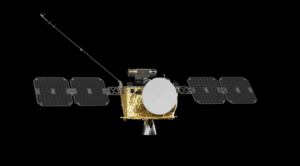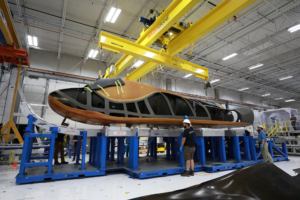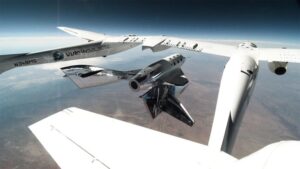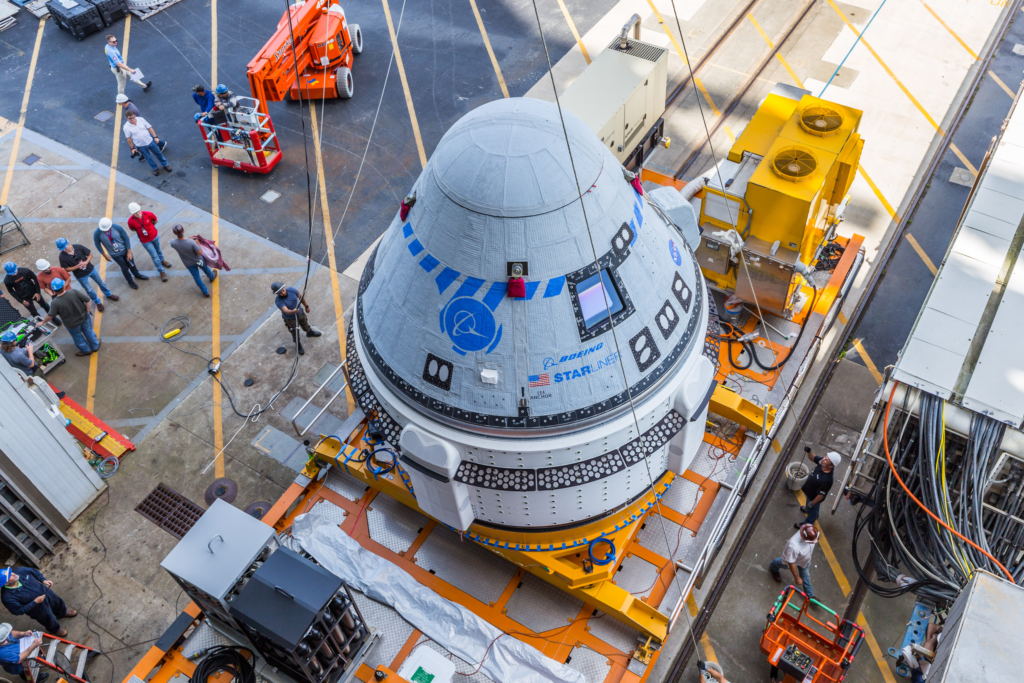
Is Boeing’s Starliner Spacecraft Ready To Carry Humans?
Boeing’s Starliner spacecraft has had a much more eventful history than NASA and the company had hoped for. Both of the previous orbital test flights featured various issues that halted the program and in some cases cost the mission. Despite this, we are only months away from the first crewed test flight of Starliner.
What was originally intended to happen next month in April, has just been delayed no earlier than July 21st. The reasons provided by NASA and the company include traffic at the International Space Station, a busy launch site, and perhaps most importantly, more time to look at Starliner’s components. Specifically, they want to make sure the parachutes on Starliner are perfect and in working order prior to the attempt.
The mission will launch two astronauts to the ISS for a total mission length of around 7 days. It’s another demonstration mission intended to prove the safety and viability of the system. This being said, based on the history of the spacecraft, some have concerns regarding that claim. Here I will go more in-depth into Starliner’s recent delay, what exactly NASA wants to check before the mission, what to expect in the coming months, and more.
New Mission Delay
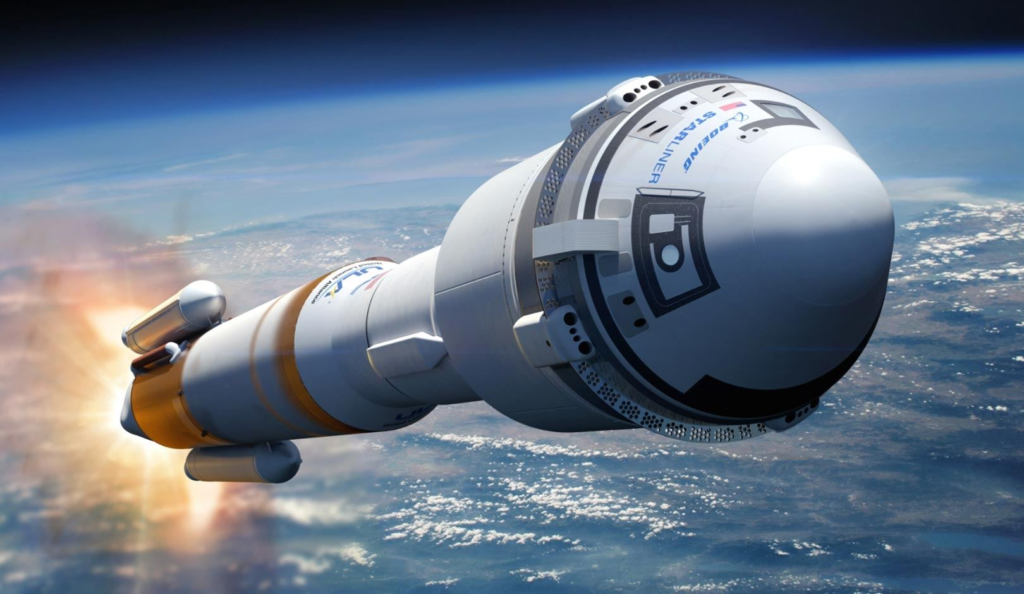
Around one week ago, we began to receive information surrounding a possible delay for Starliner’s first crewed mission. At the time NASA human spaceflight chief Kathy Lueders said, “We’re adjusting the @Space_Station schedule including the launch date for our Boeing Crew Flight Test as teams assess readiness and complete verification work. CFT now will launch following Axiom Mission 2 for optimized station operations.” They then announced that the agency would be hosting a media teleconference on the 29th to go over the exact plan and date.
With this meeting now complete, we have a better idea of the upcoming launch and what caused this delay. Starting with the updated launch date, Steve Stich, manager of NASA’s Commercial Crew Program, said during the press conference yesterday, “We’ve deliberated and decided that the best launch attempt is no earlier than July 21 for CFT,” Stich and others on yesterday’s call cited several reasons for the latest delay. For one, there will be considerable traffic at the ISS this spring, for example, with Ax-2 lifting off in May and SpaceX’s next robotic cargo mission targeted for June.
In addition, CFT’s launch site, Cape Canaveral Space Force Station in Florida, will be very busy over the coming months as well. United Launch Alliance (ULA) plans to fly a mission for the U.S. Space Force from Cape Canaveral with an Atlas V rocket this spring. Not to mention the first-ever launch attempt of the company’s new Vulcan Centaur vehicle is targeted for May from the site.
Lastly, Steve Stich highlighted that the agency also wants at least a bit more time to analyze data about Starliner’s various components, such as its parachute system, before putting astronauts on the vehicle. In this regard, the agency and Boeing are even planning to conduct one more ground test of a parachute subsystem — the chute that pulls off Starliner’s forward heat shield. That trial is targeted for May, Stich said. He continued by saying, “At this time, there’s really no issues or concerns with the parachute system, The parachutes are installed in the vehicle; they’re in good shape. It’s just a matter of going through all that data and looking at the data and making sure we’re really ready to go fly safely.”
On Boeing’s side, they reported that while the Starliner spacecraft build is complete, additional time is needed to close out verification and validation work prior to the system’s first flight with crew on board. “We are very proud of the work the team has done,” said Mark Nappi, vice president and Starliner program manager. “We understand the significance of this mission for both us and NASA. We will launch when we are ready and that includes at a time when the International Space Station can accept our vehicle.”
Meanwhile, they highlighted that the spacecraft’s integrated vehicle testing is going well. The crew module’s interior is in its flight configuration and cargo is loaded with the exception of late-stow items. Last week, NASA astronauts and CFT Commander Barry “Butch” Wilmore and Pilot Sunita “Suni” Williams, and backup pilot Mike Fincke, finished the second part of the Crew Equipment Interface Testing milestone. They maneuvered around the spacecraft getting hands-on experience with the tools and equipment they will use during the flight test. The three astronauts will also conduct several simulations focused on the spacecraft’s backup manual flight mode for added redundancy in the event of an emergency. Fueling the spacecraft and loading updated software flight parameters ensuring alignment with the ISS will be conducted closer to launch.
Starliner’s History

As this launch continues to approach, we see extra work focused on different safety systems and crew training in Starliner. Despite Starliner’s track record, both NASA and Boeing are confident that it’s ready to support two humans. It’s expected that if this upcoming mission goes well, NASA will likely certify it for regular astronaut missions, officially welcoming another private crewed spacecraft into the American fleet. However, that is much easier said than done, and even a few errors that don’t necessarily jeopardize the safety of astronauts onboard, but come up during the flight could make NASA change its mind.
Looking at Starliner’s history, it’s easy to understand why so many precautions are taking place prior to this mission. Starting in December 2019, the first uncrewed orbital test flight took place, but after deployment, an 11-hour offset in the mission clock of Starliner caused the spacecraft to compute that “it was in an orbital insertion burn”, when it wasn’t. This caused the attitude control thrusters to consume more fuel than planned, precluding a docking with the International Space Station. The spacecraft eventually landed at White Sands Missile Range, New Mexico, two days after launch.
To the displeasure of both NASA and Boeing, it was determined that two software errors detected during the test, one of which prevented a planned docking with the International Space Station, could each have led to the destruction of the spacecraft, had they not been caught and corrected in time, NASA said on February 7, 2020. A joint NASA–Boeing investigation team found that “the two critical software defects were not detected ahead of flight despite multiple safeguards”, according to an agency statement. “Ground intervention prevented the loss of the vehicle in both cases”. Before re-entry, engineers discovered the second critical software error that affected the thruster firings needed to safely jettison the Starliner’s service module. The service module software error “incorrectly translated” the jettison thruster firing sequence.
In order to try and make sure this didn’t happen again, the review team identified 80 recommendations that Boeing, in collaboration with NASA, was addressing in 2020, when action plans for each were already well under way. Since the full list of these recommendations are company-sensitive and proprietary, only those changes publicly disclosed are known.
Moving on, Boeing modified the design of the Starliner docking system prior to OFT-2 to add a re-entry cover for additional protection during the capsule’s fiery descent through the atmosphere. This re-entry cover is hinged, like the SpaceX design. Teams also installed the OFT-2 spacecraft’s propellant heater, thermal-protection tiles, and the airbags used to cushion the capsule’s landing.
During the August 2021 launch window, some issues were detected with 13 propulsion-system valves in the spacecraft prior to launch. The spacecraft had already been mated to its launch rocket, United Launch Alliance’s (ULA) Atlas V, and taken to the launchpad. Attempts to fix the problem while on the launchpad failed, and the rocket was returned to the ULA’s VIF (Vertical Integration Facility). Attempts to fix the problem at the VIF also failed, and Boeing decided to return the spacecraft to the factory, thus canceling the launch at that launch window. There was a commercial dispute between Boeing and Aerojet Rocketdyne over responsibility for fixing the problem. The valves had been corroded by the intrusion of moisture, which interacted with the propellant, but the source of the moisture was not apparent. By late September 2021, Boeing had not determined the root cause of the problem, and the flight was delayed indefinitely. By October 2021, NASA and Boeing continued to make progress and were “working toward launch opportunities in the first half of 2022”. In December 2021, Boeing decided to replace the entire service module and anticipated OFT-2 to occur in May 2022.
Eventually, the OFT-2 mission launched on May 19, 2022. It again carried Rosie the Rocketeer test dummy suited in the blue Boeing inflight spacesuit. Two Orbital Maneuvering and Attitude Control System (OMACS) thrusters failed during the orbital insertion burn, but the spacecraft was able to compensate using the remaining OMACS thrusters with the addition of the Reaction Control System (RCS) thrusters. A couple of RCS thrusters used to maneuver Starliner also failed during docking due to low chamber pressure. Some thermal systems used to cool the spacecraft showed extra cold temperatures, requiring engineers to manage it during the docking. Since then, NASA and Boeing are confident they have fixed all the issues from both of these initial tests and are ready to launch humans in just a few months.
Conclusion
Boeing and NASA just announced a new delay from next month in April to no earlier than July 21st. There are multiple reasons including a very busy ISS, Cape Canaveral launch site, and the need for more checks and tests on the Starliner spacecraft. We will have to wait and see how it progresses and the impact it has on the space industry.

